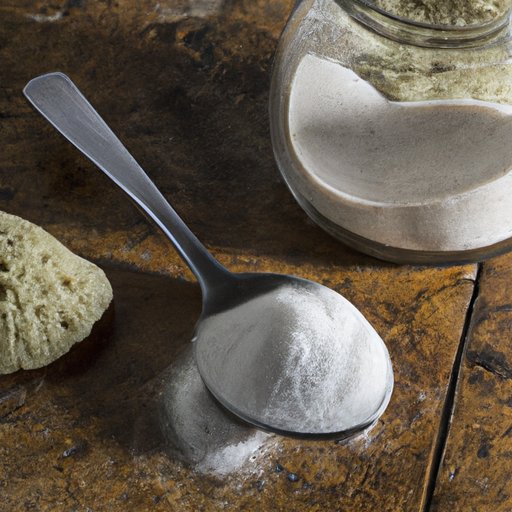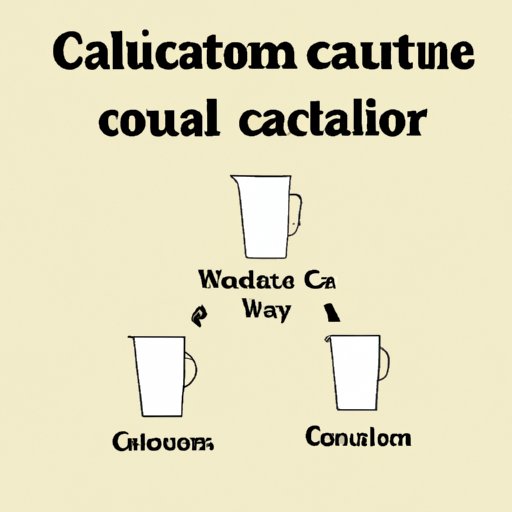
Introduction
Calcium deposits are unsightly and can serve as breeding grounds for bacteria, mold, and other harmful microorganisms, which is why removing them is important. Calcium buildup can occur in almost every household surface affected by hard water, including toilets, faucets, showerheads, and glass surfaces. Calcium deposits are caused by minerals, such as magnesium and calcium, found in hard water, which leave behind a white, cloudy or green residue. There are several easy and natural ways to get rid of calcium deposits, and you don’t need expensive chemicals or tools to do it.
Natural Remedies for Removing Calcium Deposits
Natural remedies are an excellent way to remove calcium buildup without exposing yourself to harsh chemicals or fumes. Some of these natural remedies include household items such as baking soda and lemon juice. Using vinegar as a cleaning agent is also an excellent option.
Benefits of Using Natural Remedies
The benefits of using natural remedies are that they are non-toxic, environmentally friendly and readily available from your pantry or grocery store. Additionally, they are safe to use on all household surfaces, while harsh chemicals can cause damage or discoloration, especially when used on sensitive surfaces like glass or stainless steel.
Examples of Natural Remedies
Two common natural remedies for removing calcium buildup are lemon juice and baking soda. Lemon juice is acidic, which makes it great for dissolving mineral deposits, while baking soda is mildly abrasive, which gives it scrubbing power.
How to Apply Natural Remedies to Calcium-Affected Areas
If you are using lemon juice to remove calcium buildup, you can apply it directly onto the affected area using a spray bottle or a cloth soaked in the juice. Baking soda should be mixed with water to make a paste, which you can then use to scrub the calcium buildup away using a soft-bristled brush. Just remember to rinse thoroughly after treating with any natural remedy.

Six Simple Steps to Eliminate Calcium Deposits from Your Home
Now that we have covered natural remedies let’s dive into how to remove calcium deposits in our homes. Here are six steps you can follow to remove calcium buildup in your home easily:
Identify Areas Affected by Calcium Deposits
The first step in eliminating calcium buildup is to identify the areas that are affected. Common areas in the home where calcium deposits occur include kitchen and bathroom faucets and showerheads, toilet bowls, glass surfaces, and the interior of dishwashers.
Gather Necessary Cleaning Supplies
Once you have identified the areas affected by calcium, you will need to gather your cleaning supplies. Some suggested tools include a bucket, cleaning gloves, microfiber cloths or sponges, and household cleaning products such as vinegar, baking soda, and detergent. For serious calcium buildup, a commercial descaler may be necessary.
Apply Cleaning Solution to Affected Area
Next, measure out the correct amount of cleaning solution for the area you are cleaning. For example, if you’re cleaning a toilet bowl, you may need more cleaning solution, while just a cup of vinegar or lemon juice might do the trick for a small faucet.
Let Solution Sit and Penetrate the Calcium Buildup
After applying the cleaning solution, let it sit and penetrate the calcium buildup. The amount of time that you need to wait can vary depending on the severity of the buildup.
Scrub Affected Areas with a Brush or Sponge
Using a brush or sponge, scrub the area thoroughly to remove any dislodged calcium buildup. Be sure to use a soft-bristled brush on surfaces that can be easily scratched, such as glass.
Rinse off Cleaning Solution and Dry Surface
Finally, rinse off the cleaning solution with water and dry the surface with a clean, dry cloth to prevent water spots from forming.
The Ultimate Guide to Removing Calcium Deposits from Your Faucets and Showers
Common Areas Where Calcium Deposits Accumulate in Faucets and Showers
The most common areas affected by calcium buildups are faucets and showerheads. When hard water flows through your pipes and fixtures, it can leave behind a white or greenish buildup.
Step-by-Step Guide to Removing Calcium Buildup in Faucets and Showers
Here’s a step-by-step guide you can follow to remove calcium buildup from your faucets and showers:
- Remove the showerhead or faucet aerator to ensure that all the small holes are cleaned.
- Submerge the showerhead or aerator in a bowl of vinegar for a few hours.
- Scrub the area with a soft toothbrush or cloth and rinse.
- If the buildup is severe, use a commercial cleaning solution designed for removing calcium deposits.
- Rinse well with water to remove excess solution.
- Dry the surface with a clean, dry cloth to prevent water spots.
Tips for Maintaining Calcium-Free Faucets and Showers
To keep your faucets and showers from building up calcium deposits, consider wiping them down weekly with a solution of equal parts water and vinegar. Alternatively, consider installing a water softener system in your home to avoid the hard water problem altogether.
How to Prevent and Remove Calcium Buildup in Your Dishwasher
Explanation of How Calcium Deposits Affect Dishwasher Performance
Calcium buildup in a dishwasher can cause your dishes to come out looking spotty, and make the appliance work harder, leading to higher energy bills and eventual damage.
Techniques for Removing Existing Calcium Buildup in Dishwashers
To remove calcium buildup in your dishwasher, add a cup of vinegar to the bottom of the machine and run it through a cycle. This will help break up the buildup so that it can be washed away. Alternatively, use a commercial dishwasher cleaner or descaler.
Tips for Preventing Future Calcium Deposits in Dishwashers
To avoid future calcium buildup in your dishwasher, use a dishwasher rinse aid to help prevent spots. Additionally, consider cleaning your dishwasher with vinegar weekly to help control any buildup before it becomes a severe problem.
DIY Methods for Removing Calcium Deposits from Glass Windows and Mirrors
Explanation of How Calcium Deposits Affect the Appearance of Glass Surfaces
Calcium buildup on glass surfaces is not only an eyesore but can also be challenging to remove. If left untreated, calcium buildup can even etch the glass, leaving it permanently marred.
Step-by-Step Guide to Removing Calcium Buildup from Glass Surfaces Using Household Items
The easiest way to remove calcium buildup from glass surfaces is to clean with a mixture of one part vinegar and one part water. Here’s how:
- Mix one part vinegar and one part water in a spray bottle.
- Spray the mixture onto the glass surface and let it sit for a few minutes.
- Wipe the surface clean with a clean microfiber cloth or squeegee.
Tips for Preventing Future Calcium Deposits on Glass Surfaces
Invest in a water softener system for your home to avoid hard water deposits on your glass surfaces. You can also use a squeegee to dry your shower walls and bathroom mirrors after use to reduce water spots.
Using Vinegar and Other Household Products to Remove Calcium Deposits from Your Appliances and Surfaces
Explanation of How Vinegar and Other Household Products Can Be Effective in Removing Calcium Deposits
In addition to natural remedies such as lemon and baking soda, vinegar is an excellent household product to use when trying to remove calcium deposits. It is acidic and can dissolve mineral buildups easily.
Step-by-Step Guide to Using Vinegar and Other Household Products to Remove Calcium Buildup from Appliances and Surfaces
Here’s how to remove calcium buildup from appliances and surfaces using household products:
- Mix a solution of one part water and one part vinegar in a spray bottle.
- Spray the solution onto the affected area and let it sit for a few minutes.
- Wipe away the buildup with a soft sponge or cloth.
- Rinse the surface well with water.
- Clean the surface again with a mild detergent and rinse well.
- Dry the surface thoroughly.
Precautions to Take When Using Vinegar and Other Household Products
Be sure to wear gloves and eye protection when using vinegar or any other cleaning solution. Additionally, never mix vinegar with bleach as it can be hazardous and create toxic fumes.
Conclusion
Calcium buildup is a common problem in households, but it’s easy to tackle. This guide has outlined the natural remedies, step-by-step methods, and tools needed to get rid of calcium deposits on various surfaces while also providing tips to prevent future buildup. Regular maintenance is crucial to keeping your home free from calcium deposits.





